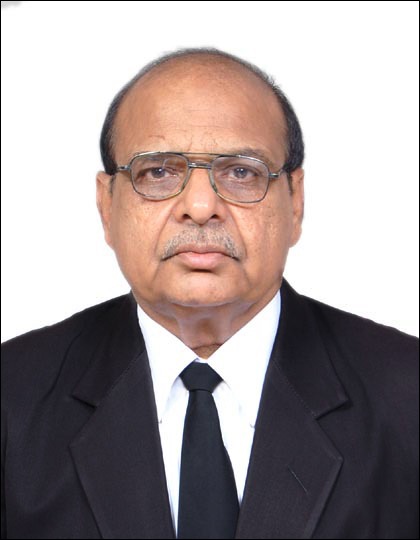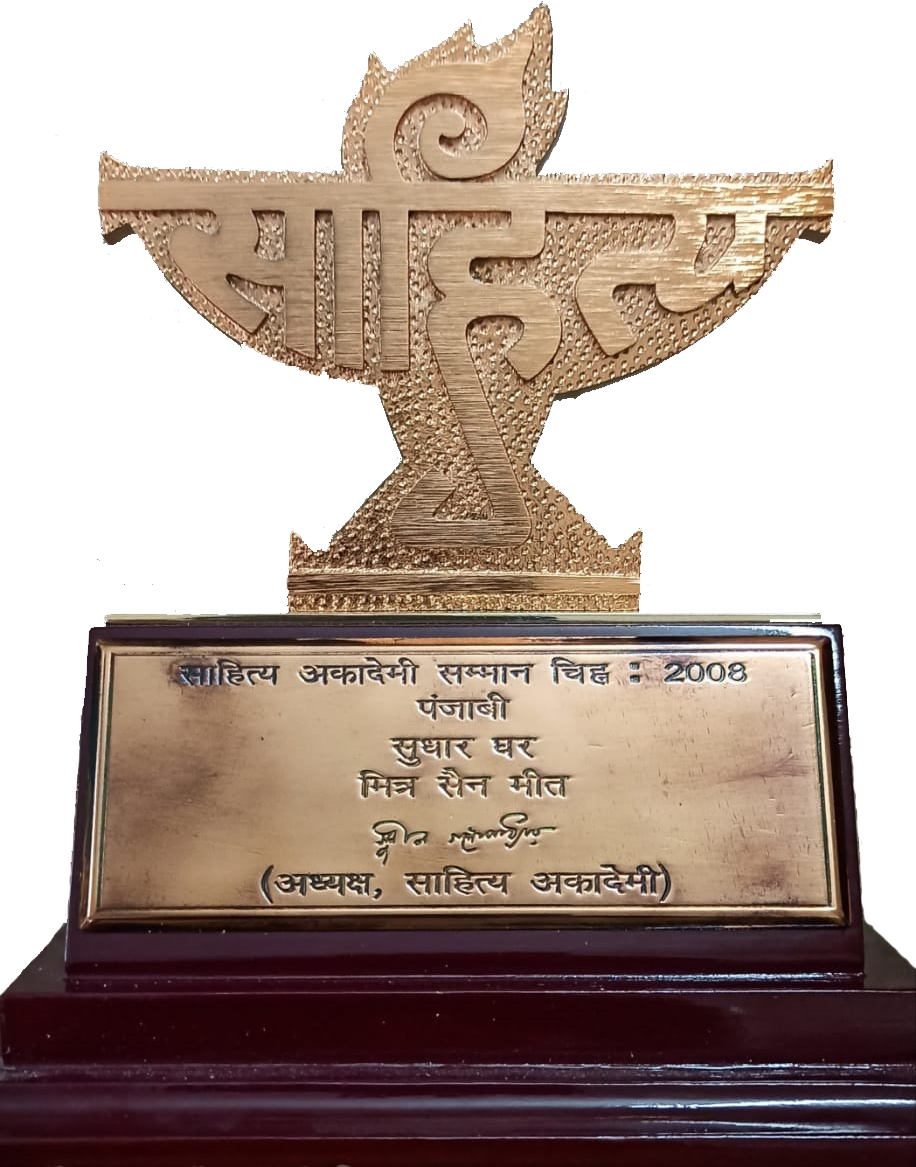ਮਰਜ਼ੀ ਨਾਲ ਸੱਟਾਂ ਮਾਰਨ ਵਾਲੇ ਜ਼ੁਰਮ (Voluntarily causing hurt)
(Sections 319, 320, 324, 325, 326, 328 and 307 IPC)
ਕਾਨੂੰਨ ਅਨੁਸਾਰ ‘ਸੱਟ’ ਸ਼ਬਦ ਦੀ ਪਰਿਭਾਸ਼ਾ
ਸਧਾਰਨ ਭਾਸ਼ਾ ਵਿਚ ਸਰੀਰਿਕ ਸੱਟ ਨੂੰ ਹੀ ‘ਸੱਟ’ ਮੰਨਿਆ ਜਾਂਦਾ ਹੈ। ਕਾਨੂੰਨ ਵਿਚ ਇਸਦੀ ਪਰਿਭਾਸ਼ਾ ਵਸੀਹ ਹੈ। ਦੂਸਰੇ ਵਿਅਕਤੀ ਨੂੰ ਕੋਈ ਬਿਮਾਰੀ ਲਾਉਣਾ ਜਾਂ ਉਸਦੇ ਸਰੀਰ ਨੂੰ ਨਿਰਬਲ ਕਰਨਾ ਵੀ ਸੱਟ ਸ਼ਬਦ ਵਿਚ ਸ਼ਾਮਲ ਹੈ। ਕਿਸੇ ਵਿਅਕਤੀ ਨੂੰ ‘ਮਰਜ਼ੀ ਨਾਲ’ ਸੱਟ ਮਾਰਨ ਨਾਲ ਹੀ ਸੱਟ ਮਾਰਨ ਵਾਲੇ ਵਿਅਕਤੀ ਤੇ ਜ਼ੁਰਮ ਬਣਦਾ ਹੈ ਅਤੇ ਉਹ ਸਜ਼ਾ ਦਾ ਭਾਗੀਦਾਰ ਹੁੰਦਾ ਹੈ। ਕਾਨੂੰਨ ਦੀ ਪਰਿਭਾਸ਼ਾ ਵਿਚ ‘ਮਰਜ਼ੀ ਨਾਲ ਸੱਟ’ ਮਾਰਨ ਸ਼ਬਦ ਦੇ ਅਰਥ ਵਸੀਹ ਹਨ।
ਸ਼ਬਦ ‘ਮਰਜ਼ੀ ਨਾਲ ਮਾਰੀ ਸੱਟ‘ ਦਾ ਅਰਥ:
ਪੀੜਿਤ ਨੂੰ ਸਿੱਧੇ ਤੌਰ ਤੇ ਸਰੀਰਿਕ ਸੱਟ ਮਾਰੀ ਜਾਣਾ ਪਰਿਭਾਸ਼ਿਤ ਸ਼ਬਦ ‘ਮਰਜ਼ੀ ਨਾਲ ਮਾਰੀ ਸੱਟ’ ਦਾ ਜ਼ਰੂਰੀ ਤੱਤ ਨਹੀਂ ਹੈ। ਜੇ ਦੋਸ਼ੀ ਨੂੰ ਕੇਵਲ ਇਸ ਗੱਲ ਦਾ ਗਿਆਨ ਹੋਵੇ ਕਿ ਉਸ ਵੱਲੋਂ ਕੀਤੇ ਜਾ ਰਹੇ ਕਾਰਜ ਦੇ ਪੀੜਿਤ ਦੇ ਸਰੀਰ ਉੱਪਰ ਗੰਭੀਰ ਪ੍ਰਭਾਵ ਪੈਣਗੇ ਤਾਂ ਵੀ ਉਸ ਕਾਰਜ ਨੂੰ ‘ਮਰਜ਼ੀ ਨਾਲ ਮਾਰੀ ਸੱਟ’ ਹੀ ਗਿਣਿਆ ਜਾਵੇਗਾ।
Case : E.K. Chandrasenan vs. State of Kerala 1995 Cri.L.J. 1445 (SC)
Para “26. To sustain the first submission, Shri Sanyal refers us to the definition of ” voluntarily” as given in Section 39 of the Penal Code which, inter alia, says that a person is said to cause an effect voluntarily when he knew or had reason to believe to be likely to cause it. Learned counsel contends that the accused persons had no knowledge that the effect of the consumption of the adulterated liquor would be so injurious as it proved to be. This submission cannot be accepted because the aforesaid knowledge can well be imputed for two reasons. First, under the Kerala Abkari Act no mixture at all with the liquor as supplied to the firm was permissible. This legal position is not disputed before us. In view of this, the acceptance of the formula given by A-9 in mixing “spirit” or water with arrack was itself an illegal act. Secondly, in the present case what was mixed was not “spirit” but, as already noted, poisonous substance, as is methyl alcohol. The percentage of methyl found in the liquor supplied by the firm being what was found to be, it has to be held that the persons responsible for mixing had the knowledge that consumption of the liquor was likely to cause very serious adverse effects, …”
‘ਕਤਲ ਕਰਨ ਦੀ ਕੋਸ਼ਿਸ਼‘ (attempt to murder) ਜ਼ੁਰਮ ਦੇ ਜ਼ਰੂਰੀ ਤੱਤ
ਕਤਲ ਕਰਨ ਦੀ ਕੋਸ਼ਿਸ਼ ਜ਼ੁਰਮ ਦਾ ਮੂਲ ਤੱਤ ਦੋਸ਼ੀ ਦੀ ਨੀਅਤ (intention of accused) ਹੈ ਨਾ ਕਿ ਮਾਰੀ ਗਈ ਸੱਟ ਦੀ ਕਿਸਮ (nature of injury).
Case (i) : R.Prakash vs. State of Karnataka 2004 Cri.L.J.1391 (SC)
Para “9. It is sufficient to justify a conviction under Section 307 if there is present an intent coupled with some overt act in execution thereof. It is not essential that bodily injury capable of causing death should have been inflicted. Although the nature of injury actually caused may often give considerable assistance in coming to a finding as to the intention of the accused, such intention may also be deduced from other circumstances, and may even, in some cases, be ascertained without any reference at all to actual wounds. The Sections make a distinction between the act of the accused and its result, if any. The Court has to see whether the act, irrespective of its result, was done with the intention or knowledge and under circumstances mentioned in the Section. …”
Case (ii) : State of MP v/s Saleem @ Chammaru, 2005 Cri. L.J.3435(1) (SC)
Para “13. It is sufficient to justify a conviction under Section 307 if there is present an intent coupled with some overt act in execution thereof. It is not essential that bodily injury capable of causing death should have been inflicted. The section makes a distinction between the act of the accused and its result, if any. The Court has to see whether the act, irrespective of its result, was done with the intention or knowledge and under circumstances mentioned in the section. Therefore, an accused charged under Section 307, IPC cannot be acquitted merely because the injuries inflicted on the victim were in the nature of a simple hurt.”
ਕਿਸੇ ਵਿਅਕਤੀ ਨੂੰ ਨੁਕਸਾਨ ਪਹੁੰਚਾਉਣ ਲਈ ਦਿੱਤੀ ਗਈ ਜ਼ਹਿਰ ਆਦਿ (ਧਾਰਾ 328) ਦੇ ਜ਼ੁਰਮ ਦੇ ਜ਼ਰੂਰੀ ਤੱਤ
ਮੂਰਛਿਤ/ਸੁੰਨ (stupefying) ਕਰਨ ਵਾਲੀ ਦਵਾਈ ਖਵਾਉਣ ਨਾਲ ਧਾਰਾ 328 ਆਈ.ਪੀ.ਸੀ. ਦਾ ਜ਼ੁਰਮ ਬਣਦਾ ਹੈ।
Case : Madhukar Damu Patil v/s State of Maharashtra, 1996 Cri.L.J. 1062 (Bombay – HC)
Para “18. ….. It needs to be emphasised that administering of poison is only one of the modes by which an act may fall within the mischief contemplated by this Section.”
ਸੱਟਾਂ ਵਾਲੇ ਕੇਸਾਂ ਨੂੰ ਸਿੱਧ ਕਰਨ ਵਾਲੀਆਂ ਮੁੱਢਲੀਆਂ ਲੋੜਾਂ (basic requirements)
ੳ) ਝੱਟਪੱਟ ਦਰਜ ਕਰਾਈ ਗਈ ਐਫ.ਆਈ.ਆਰ. ਜਿਸ ਕਾਰਨ ਸਲਾਹ ਮਸ਼ਵਰੇ ਅਤੇ ਗਵਾਹ ਦੇ ਪੜ੍ਹੇ ਪੜ੍ਹਾਏ ਜਾਣ ਦੀ ਸੰਭਾਵਨਾ ਰੱਦ ਹੁੰਦੀ ਹੋਵੇ,
ਅ) ਦੋਸ਼ੀਆਂ ਦੀ ਸਹੀ ਪਹਿਚਾਣ,
ੲ) ਦੋਸ਼ੀਆਂ ਨੂੰ ਗਲਤ ਫਸਾਉਣ ਦੀ ਕਿਸੇ ਸੰਭਾਵਨਾ ਦਾ ਨਾ ਹੋਣਾ ਅਤੇ
ਸ) ਦੋਸ਼ ਰਹਿਤ ਡਾਕਟਰੀ ਗਵਾਹੀ
Case : Chhuttan vs. State of U.P. 1996 Cri. L.J. 649 (Allahabad – HC)
- FIR was finely recorded
Para “27. The FIR, in short, contains everything upon which the prosecution case has been built-up, namely, the date, time and place of occurrence, name of the accused, the weapons used by them and motive for the crime. If the F.I.R. contains these things, which the present F.I.R. contains, then it becomes a beautiful piece of evidence, which can be used for corroborative purposes as done in this case. Therefore, no fault could be found with such a F.I.R. Further, it is found that it was lodged without any loss of time, without any tutoring, consultation or confabulation. It becomes an impregnable fortress of the prosecution.”
- The complainant eschew falsehood and stick to truth
Para “28. I have thread-bars examined the statement of the complainant Hari Shankar on this point. He has not faultered. He has proved the illicit relations between his mother and the accused Ram Charan. He has proved the role played by the accused, the exhortation by Ram Charan. He has faithfully not stated that Ram Charan caused any injuries to him. He simply exhorted the other two accused for causing injuries. Therefore, it shows that the complainant did not want to exaggerate the role played by Ram Charan. Otherwise, he could have done so. This again shows that the complainant is eschowing falsehood and sticking to the truth.”
- The witness has told the whole truth.
Para “29. Dr. Jain found the injuries bleeding and were accordingly fresh. Whether the blood spots were found on the rickshaw or not, it not very material piece of evidence in this case in such circumstance when the investigation was taken in the hands by the police personnel of another police station. Therefore, I find that except for minor tit-bits here and there in the statement of complainant, nothing material could be pointed out on the basis of which it could be said that the witness is not stating the whole truth”.
- Findings of the Hon’ble High Court
Para “29. ….. Under these circumstances, the involvement of all the three accused in the present case is proved beyond any doubt with the common intention to murder or cause injuries”.
ਦੋਸ਼ੀ ਨੂੰ ਸਜ਼ਾ ਦੀ ਮਾਤਰਾ ਨਿਰਧਾਰਤ ਕਰਨ ਵਾਲੇ ਨਿਯਮ
(ੳ) ਜਦੋਂ, ਦੋਸ਼ੀਆਂ ਵੱਲੋਂ ਅਪਰਾਧ ਕੇਵਲ ਪੈਸੇ ਦੀ ਹਵਸ ਕਾਰਨ, ਇਸ ਢੰਗ ਨਾਲ ਕੀਤੇ ਗਏ ਹੋਣ ਕਿ ਉਹਨਾਂ ਦਾ ਮਨੁੱਖੀ ਖੁਸ਼ੀ ਨਾਲ ਕੋਈ ਸਰੋਕਾਰ ਹੀ ਨਾ ਰਹੇ, ਅਤੇ ਉਹ ਰਾਖਸ਼ਸਾਂ ਵਾਲਾ ਵਿਵਹਾਰ ਕਰਨ ਲੱਗ ਪੈਣ ਤਾਂ ਅਜਿਹੇ ਦੋਸ਼ੀਆਂ ਨਾਲ ਸਖ਼ਤੀ ਨਾਲ ਨਿਪਟਣਾ ਚਾਹੀਦਾ ਹੈ।
Case : E.K. Chandrasenan vs. State of Kerala 1995 Cri. L.J. 1445
Para “46. ….. as the appellants by their nefarious activity, prompted only by lust for money, sold such a brew which contained even a poisonous substance. And see the enormity of consequence, 70 deaths and 24 losing their eye sights permanently. What can be more shocking to the conscience? If a greed for money makes people so unconscionable, so unconcerned with human happiness and make them behave like devils and to destroy human lives, they have to be dealt with appropriately, sternly and with a steel heart not yielding to any plea of softness on any ground, not relenting to discharge the onerous duty which falls on a court in such cases.”.
(ਅ) ਜੇ ਦੋਸ਼ੀ ਵੱਲੋਂ ਕੀਤੇ ਗਏ ਜ਼ੁਰਮ ਗੰਭੀਰ (henious) ਹੋਣ ਤਾਂ ਵੱਡੀ ਉਮਰ, ਗਰੀਬੀ ਜਾਂ ਬਿਮਾਰੀ ਆਦਿ ਕਾਰਨ ਉਸਦੀ ਸਜ਼ਾ ਨੂੰ ਘਟਾਇਆ ਨਹੀਂ ਜਾ ਸਕਦਾ।
Case : E.K.Chandrasenan vs. State of Kerala 1995 Cri.L.J. 1445
Para “49. ….. The learned counsel, however, urged that keeping in view the old age of this accused and his financial weak position, because of which even before the trial court as well as in the High Court he was given legal aid, we may not enhance the sentence. His deafness is also brought to our notice.
- We have duly considered the aforesaid submissions of Shri Jain. As to the advance age we would say though this is a mitigating circumstance, there exists an aggravating circumstance as well the same being that it was this accused who was the prime mover, as would be apparent from the facts noted above and as pointed out by the High Court in para 157 of the judgment. Thus the age factor has been neutralised by the active role played by this accused in the conspiracy. As regards financial weakness of the accused which required providing of legal aid in the courts below, the same cannot be said to have in any way prejudiced him/accused inasmuch as his case was adequately taken care of by the other accused who were well defended by eminent lawyers. Further, the accused has now got assistance of senior counsel like Shri Jain who is known for his legal acumen. In so far as deafness is concerned, that is not relevant for the purpose at hand.
- Because of the above, we have not felt inclined to treat this accused differently from others….”
ਲੁਕਵੇਂ ਤੌਰ ਤੇ ਜ਼ੁਰਮ ਵਿਚ ਸ਼ਾਮਲ ਦੋਸ਼ੀ ਦੇ ਦੋਸ਼ੀ ਹੋਣ ਨੂੰ ਨਿਰਧਾਰਤ ਕਰਨ ਦਾ ਨਿਯਮ
ਦੋਸ਼ੀ ਨੂੰ ਅਪ੍ਰਤੱਖ (constructive liability) ਦੇ ਅਧਾਰ ਤੇ ਸਜ਼ਾ ਹੋ ਸਕਦੀ ਹੈ।
Case : Bishwanath Singh vs. State of Bihar 1995 Cri.L.J.2626 (SC)
Para “2. ….. Constructive liability of the appellant in the crime on this argument cannot be ruled out. In so far as his participation in the crime is concerned, the contents of the dying declarations were almost a clincher, let apart the consistent and cogent evidence of the eye-witnesses. The involvement of the appellant having been firmly established in the commission of the crime, we feel the High Court committed no error in distinguishing his case from the other two convicted accused insofar as the imposition of sentence is concerned. As said before, the appellant has been awarded 3 years’ R. I. in comparison to his co-accused who have been awarded 7 years’ R. I. due to the formidable weapons they used against the deceased. There is, therefore, no scope for further reducing the sentence of the appellant from the one imposed.”







More Stories
ਜ਼ੁਰਮ ਵਿਚ ਲੁਕਵੀਂ ਹਿੱਸੇਦਾਰੀ ਦੀ ਸਜ਼ਾ /Constructive criminal liability
ਅੰਧਾ-ਧੁੰਦ ਅਤੇ ਅਣਗਹਿਲੀ/ਲਾਪਰਵਾਹੀ ਨਾਲ ਕੀਤਾ ਕਾਰਜ /Rash and negligent driving
ਧੋਖਾ-ਧੜੀ ਅਤੇ ਜਾਅਲੀ ਦਸਤਾਵੇਜ਼ ਤਿਆਰ ਕਰਨਾ (Cheating and forgery of documents)